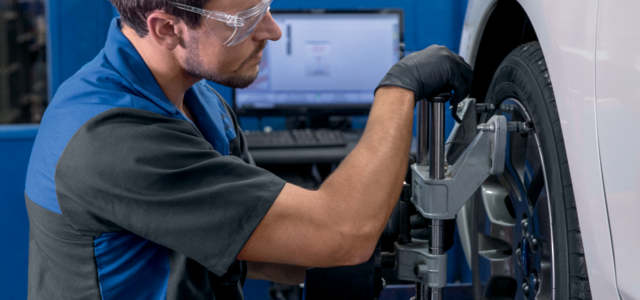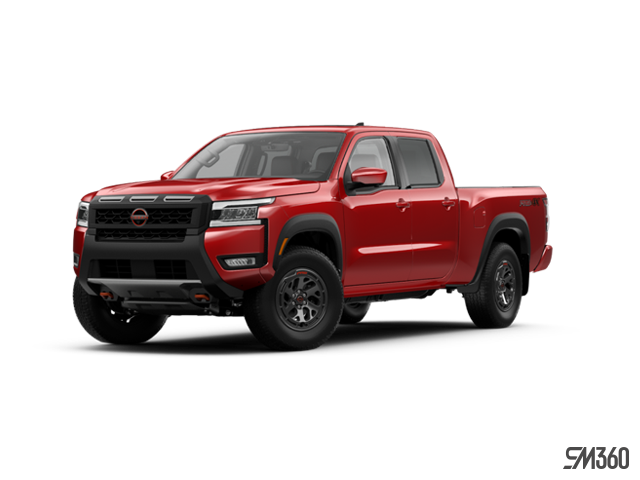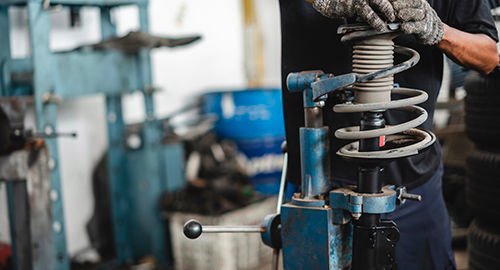Have you noticed something off about the handling of your vehicle?
Have you noticed uneven tire wear?
Pulling to the side?
Do you notice your steering wheel is off-center when you’re driving straight?
Or maybe even feel the steering wheel vibrate while you drive?
It might be time for you to schedule a service appointment and get a vehicle alignment.
The most common cause for your vehicle coming out of alignment is poor road conditions. For example, if you hit a particularly large pothole, there is a possibility for damage to occur to your car. Alignment problems can also arise if you hit a curb or other obstruction in the road.
There are many other reasons you could need an alignment. In fact, normal wear and tear can eventually cause your car to come out of alignment. That is why we recommend you perform an alignment on your vehicle at least every one to two years, or when you get your tires swapped to ensure optimal safety.
What Is An Alignment?
An alignment is an important part of maintaining your vehicle. It is a service performed by a mechanic to get your vehicle’s suspension back into proper form by making adjustments to the vehicle’s tires and axles.
Your mechanic will put your vehicle on a hoist and use an alignment machine that has devices that clamp to the wheels. The machine is hooked up to a computer and your mechanic makes precise adjustments to a series of measurements to get everything perfectly aligned.
There are three main areas that your mechanic will adjust; camber, toe, and caster;
- Camber – the inward or outward angle of the tire when viewed from the front of the vehicle.
- Toe – the extent to which your tires turn inward or outward when viewed from above.
- Caster – the angle of your steering axis when viewed from the side of your vehicle. Helps balance steering, stability, and cornering
Different Types of Alignment:
1. Front-End – A front-end alignment makes adjustments to the front axle. This is the most basic type of alignment and is not always recommended for modern vehicles.
2. Thrust – A thrust alignment combines a front-end alignment with a thrust alignment to ensure all four wheels are squared with one another. This type of alignment is usually recommended for vehicles with a solid rear axle.
3. Four-Wheel – This comprehensive alignment combines elements of the front-end and thrust-angle alignments and also positions the rear axle angles. A four-wheel alignment is typically for four-wheel and all-wheel drive vehicles and front-wheel drive cars with adjustable/independent rear suspensions.
Why Do I need It?
Getting an alignment assures your tires meet the road at the proper angle, your wheels are pointing straight and your tires are centered in the wheel wells. It adjusts the angles of your vehicle’s wheels to original specs for best gas mileage, proper road contact, a smooth ride, and the longest tire life.





